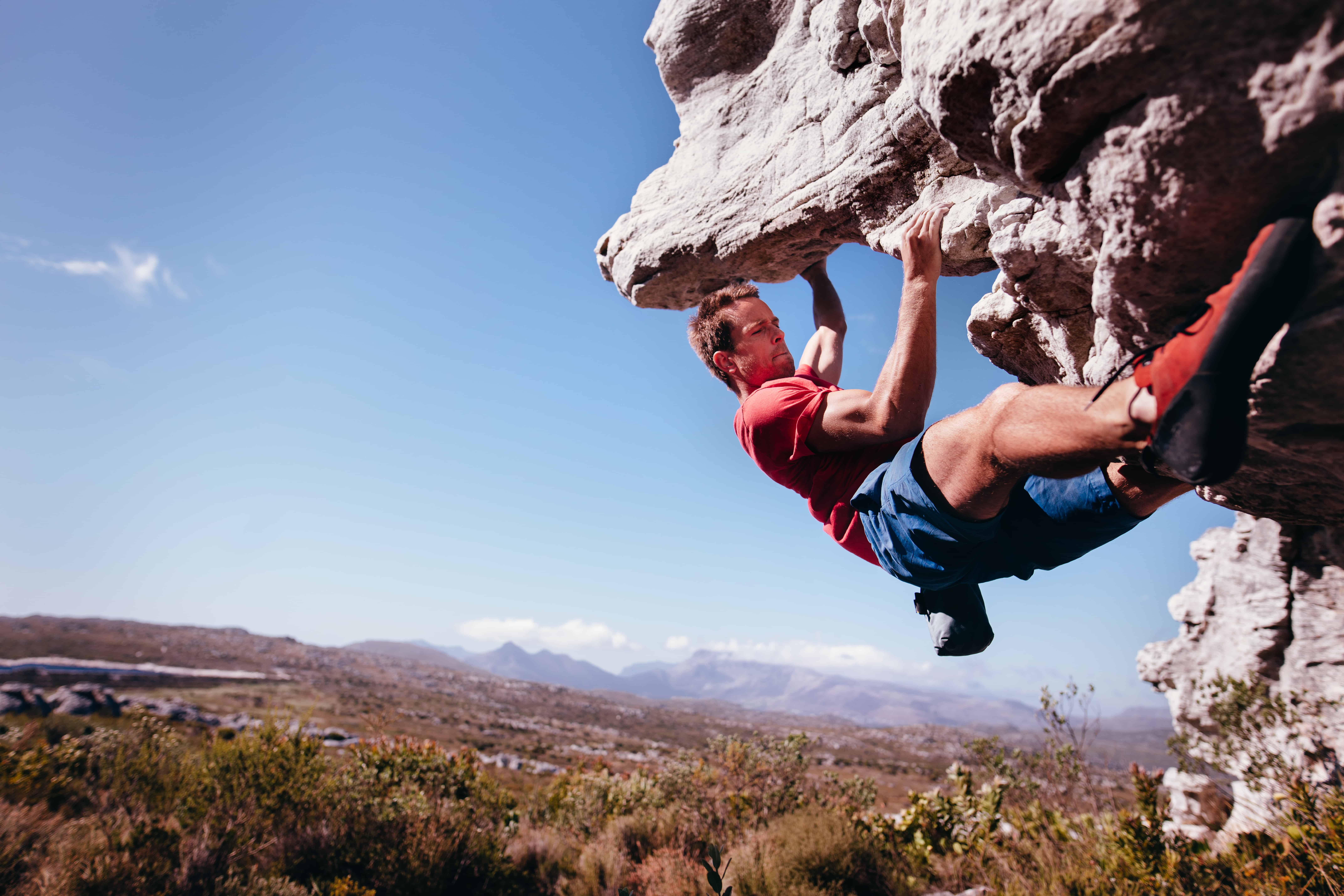Have you ever tried rock climbing? It is not as difficult a sport as you think. With the right approach, it can be enjoyed at almost any age. Rock climbing in Port Macquarie is increasingly popular with locals and travellers alike.
Love a challenge? Maybe you’re already addicted to the sport of rock climbing. Take an in-depth look at what’s involved with rock climbing in Port Macquarie and in general.
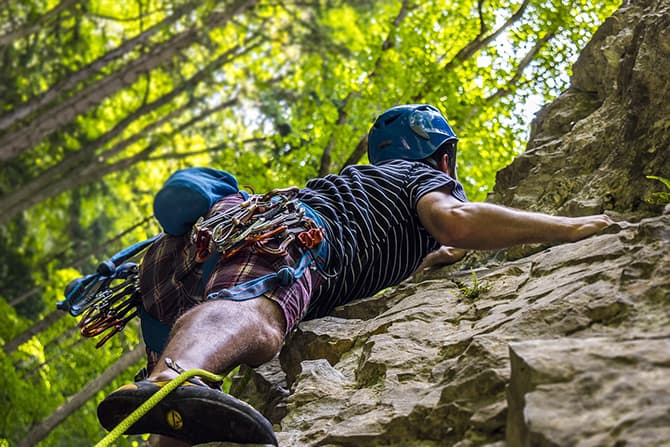
Why go rock climbing?
The sport of rock climbing tests strength, skill and mental agility. Let’s examine what makes this challenging hobby so popular:
- Good for kids: Rock climbing is a great sport for kids. Being lighter and smaller than adults, kids can take to rock climbing much more quickly. In fact, many of the record holders for rock climbing speed are teenage girls, thanks to their slight frames and relative strength. The sport is a great group activity as well, offering a bonding experience. Climbers have to rely on a partner for safety and support.
- Ideal for strength and fitness: Rock climbing is a full-body workout and can help build strength across your whole frame. Don’t be put off by the images of climbers hanging on by their fingertips. Beginner climbers use their legs and feet just as much as their hands. As you climb more, you’ll notice your stamina increases. You can hold on for longer, reach higher and climb further.
- A great way to challenge yourself and build self-confidence: There is nothing like the buzz of completing a difficult climb. It is an amazing sense of achievement that can help you to build self-confidence. If you can climb a sheer rock face, what can’t you do? Regular climbers confess they can’t get enough of the adrenaline rush associated with completing a route.
- A fun family activity: Rock climbing is a great activity for the whole family to enjoy together. Little kids love an indoor rock climbing centre. Outgoing teens get a kick out of the outdoor experience.
- Great for travel: Once you get the bug, you’ll be on the lookout for new and exciting places to go rock climbing. There are spots up and down the NSW coast. Internationally, highlights include France, the USA, Greece and Morocco.
Types of rock climbing
Like many sports, rock climbing has its variations. Here are the main few you need to know to get started.
- Top Roping: Top roping is the safest and most common way to begin rock climbing. Most indoor facilities use top-roping. This style requires a preset rope and anchoring points, making it the easiest way to start. With a toprope, you are completely safe if you let go of the wall. Your harness and rope prevent you from falling.
- Bouldering: Bouldering is different in that it uses crash mats rather than ropes for safety. It is called bouldering because generally it is done on boulders, which are smaller and less high than cliff faces. As it relies on mats/crash pads and not ropes, bouldering can be done with a buddy or two. It is not advisable to go bouldering alone. Even slipping from a small height can lead to injury.
- Traditional: Traditional rock climbing is more of a challenge. It starts with no set route or anchors. The climber must secure their ropes and anchors as they climb. Routes and ‘good’ holds must be identified during the climb. For this reason, it’s not the best idea for the total beginner to go traditional.
- Sport Climbing: Sport climbing uses pre-placed bolts (handholds or footholds). You know where the holds are so the challenge is climbing faster than your friends.
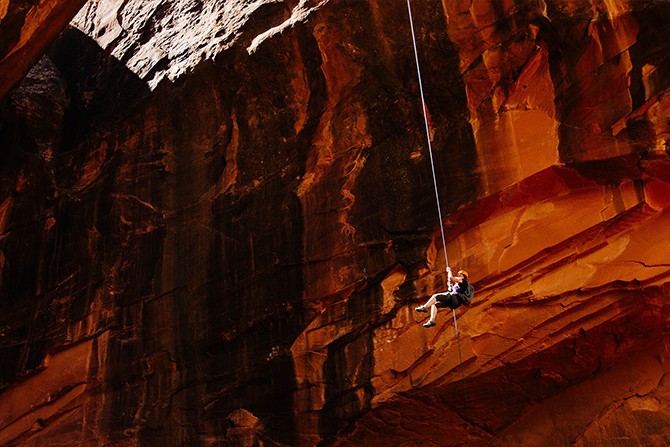
Risky rock climbing
Other than these, there are more daring and risky styles, such as free-solo climbing. This means completing a climb to a major height without ropes. Alex Honnoldis the world’s most famous free climber (at least he is the most famous who is still alive, which says a lot about the sport). In 2018, he set the record as the first person to climb El Capitan in the US without ropes. It took him under four hours to climb 3,000 feet.
Don’t be fooled about Alex’s accomplishment. It took a great deal of planning and training for it to take place safely. Alex makes it look easy but he is one of a kind and did not take unnecessary risks (apart from the climb itself!).
Places to go rock climbing in Port Macquarie
For anyone who is interested in rock climbing, Port Macquarie and its surrounds have excellent opportunities:
Indoor rock climbing: Indoor rock climbing is a good way to begin your rock climbing adventures. Centre of Gravity in Port Macquarie is the perfect place to start. With levels of difficulty suitable for climbers of all skill levels, international standard rock walls and friendly and helpful staff, Centre of Gravity is really a no-brainer for Port Macquarie rock climbers. Children will love learning to climb. Beginners can climb without fear. It’s also perfect as a rainy day activity.
There are also a number of brilliant outdoor rock climbing sites near Port Macquarie.
South of Port Macquarie: Crowdy Bay
Less than an hour south of Port Macquarie, there are rock climbing spots in Crowdy Bay National Park. The park offers great all-around climbing. Just remember: This is a national park. Respect the environment and check fire conditions in the area for park closures. You don’t want to find yourself trapped somewhere unsafe.
These are the popular climbing spots at Crowdy Bay:
- The Boat Hole: A number of small, natural pillars can be found right beside the stunning Pacific Ocean. This is a great spot for traditional climbing.
- Crowdy Head Cliffs: A little more advanced but worth the effort, the Crowdy Head Cliffs offer some excellent oceanside climbing.
- Diamond Head: Diamond Head is recommended for all types of bouldering, about 200 metres south of The Boat Hole.
North of Port Macquarie: South West Rocks
About an hour in the other direction, South West Rocks has some of the best rock climbing Port Macquarie’s surrounds have to offer.
- Arakoon: Situated on a small peninsula in Arakoon National Park, this is an ideal spot for bouldering. Those who have tried it out recommend you take along two crash pads. Camping sites are conveniently situated nearby. Visit: https://www.thecrag.com/climbing/australia/new-south-wales-and-act/mid-north-coast/area/2503455516
- Little Bay: Also in the national park, Little Bay is another great place for bouldering. Right near a beautiful picnic area, Little Bay offers a great selection of boulder sizes for all skill levels.
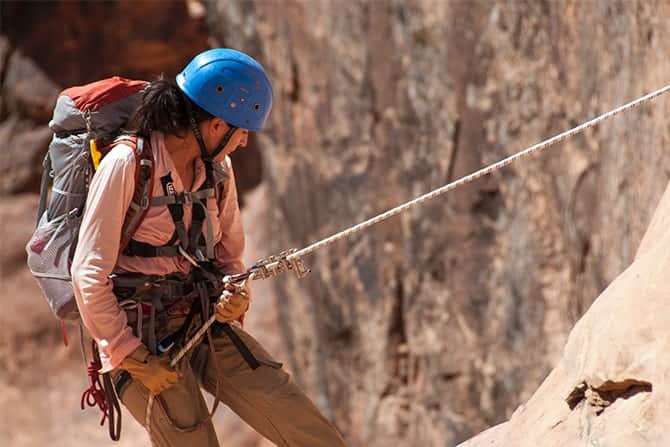
Getting started as a rock climber
Rock climbing is considered an extreme sport. It is vital you prepare properly for the safety of yourself and those around you. Here is a quick rundown of what you need to know to get started as a rock climber:
Equipment:
If you are indoor rock climbing at Port Macquarie’s Centre of Gravity, they will have most of the equipment you will need for hire. Asa novice, wear comfortable clothes that are long enough to fit under a harness. If your shorts are too short, you are in for an uncomfortable time. You may be able to rent climbing shoes at your facility, otherwise sneakers or other covered shoes will do for starting out. For better grip, grab a bag of climbing chalk and a pouch to clip to your belt. Just don’t get the chalk in your eyes… it’s a nasty experience!
Once you move outside, things get a little more complicated. Rock climbing is a very gear heavy sport, especially in terms of safety. You can climb in sneakers but it is better to invest in a good pair of specialised rock climbing shoes. Your feet will anchor you to the rock most of the time so a good shoe is essential. For your first pair, choose a comfortable, all-around shoe. Once you gain experience and skill, you can seek out more specialised shoes to suit your climbing goals. Pro climbers look for the tightest shoes they can cram their feet into.
Only the most skilled and foolhardy of climbers will climb without a rope (with the exception of bouldering). Ropes are literally your lifeline when you climb so you need to select them carefully.
What rock climbing equipment do you need?
Be aware that there are two types of ropes; dynamic and static. Dynamic ropes have elasticity and are the only rope to use for your personal safety. The elasticity allows the rope to have some give should you fall, preventing nasty jolts from a non-elastic, static rope.
Static ropes are useful for anchoring and shifting equipment but should always be avoided for use in belaying/preventing climbers from falling too far.
A light and comfortable harness is also essential to keep you safe and secure. Harnesses come in many styles but generally fit around the waist and legs. Your harness should be comfortable but secure and snug. A loose harness is extremely unsafe, even if it feels more comfortable on your nether regions.
A belay device is a simple tool that attaches your harness to your rope. It is essential for falls prevention as it will slow or stop your descent. There are two options when it comes to belaying devices; passive or active. Passive devices are the most advisable for novices as they work automatically when you fall. An active device gives you more freedom but relies on your reflexes to stop a fall and are better suited to experienced climbers.
Carabiners are metal loops used for attaching devices to each other. Locking carabiners are essential for any connection related to your safety. Non-locking carabiners are used simply to attach supplementary equipment such as water bottles or spares.
Helmets are a must. A helmet will protect your head from any falling debris coming from above as well as possibly saving your life in the event of a genuine accident.
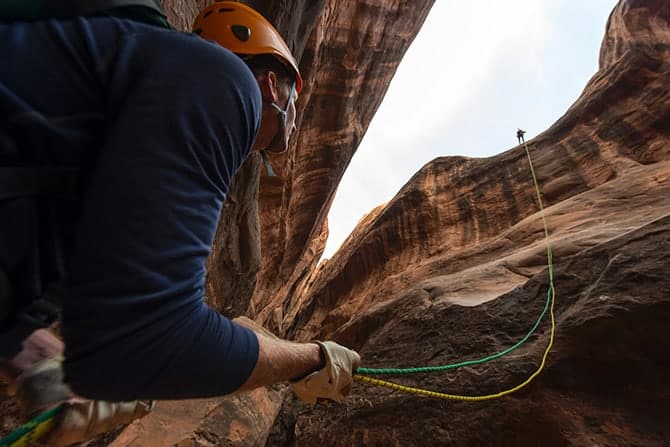
Safety in numbers
The final element is friends. You can’t really climb alone unless you go bouldering in your local climbing gym. But this is one of the best things about the sport. Climbers are friendly and always excited to welcome newcomers.
Communicating
Communication is key when rock climbing. Get familiar with the terminology before you start.
Climbers have a process when they ‘rope up’ of checking and double-checking. They run through a checklist, saying things out loud as they check ropes and carabiners are secure.
An important tip when communicating with your partner is to always call out their name first. Other climbers in the area may be calling out the same commands so it is best to avoid confusion. Basic commands between climbers include ‘on belay’ to ensure the climber is secure, followed by ‘belay on’, ‘falling’ for the obvious situation and ‘rock’ if you dislodge debris, drop something or simply see rocks falling. ‘Down belay’ means it is time to descend.
Make sure you take the time with your rock climbing crew to go through all the commands you will be using. Ensure that everyone is on the same page, to minimise risk.
Cautions
Remember, rock climbing, Port Macquarie or anywhere else can be a potentially dangerous sport.
The safety of yourself and those around you is of paramount importance. Always ensure you are safely connected and that you have a buddy watching your back just as you will watch theirs.
If you are heading to any isolated location, tell someone where you are going and when you are due back. This way they can raise the alarm if you don’t come home on time.
Check and double-check all of your equipment before every time you climb. A faulty carabiner could be the difference between a great day out and a broken leg or worse. The same goes for double checks before you begin an ascent or descent. Make sure everything is in place and properly secured, your helmet clipped, ropes are tied correctly, harnesses are firm and properly buckled and all the rest.
When climbing outdoors, take plenty of water and a first aid kit. Snakes love a warm rock and won’t welcome a hand grabbing at them from underneath! Plus climbing is thirsty work. Energy drinks and power bars come in handy. And don’t forget the suncream.
Take precautions but don’t forget to have fun! It is a real thrill to use your body to scale a rock face. Figure out the right techniques and you’ll be surprised at what you can achieve. Once you have worked up an appetite after Port Macquarie rock climbing, come into The Westport Club for dinner and debrief. Refuel with a meal at Aqua Restaurant or enjoy some drinks at Jimmy’s Bar and Lounge while you share stories of your adventures.

